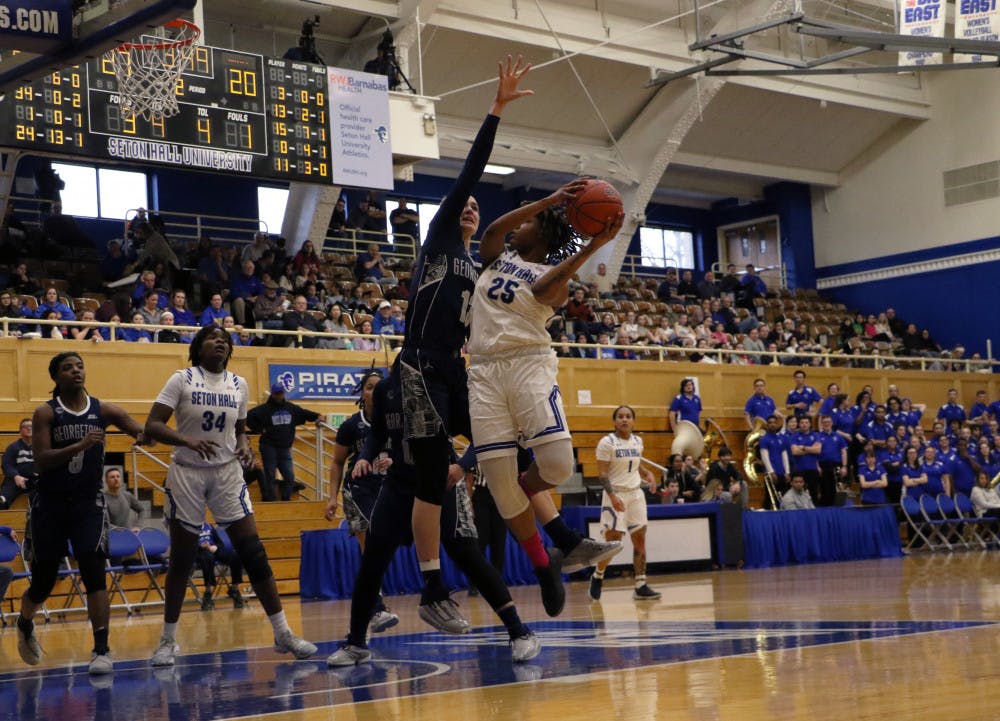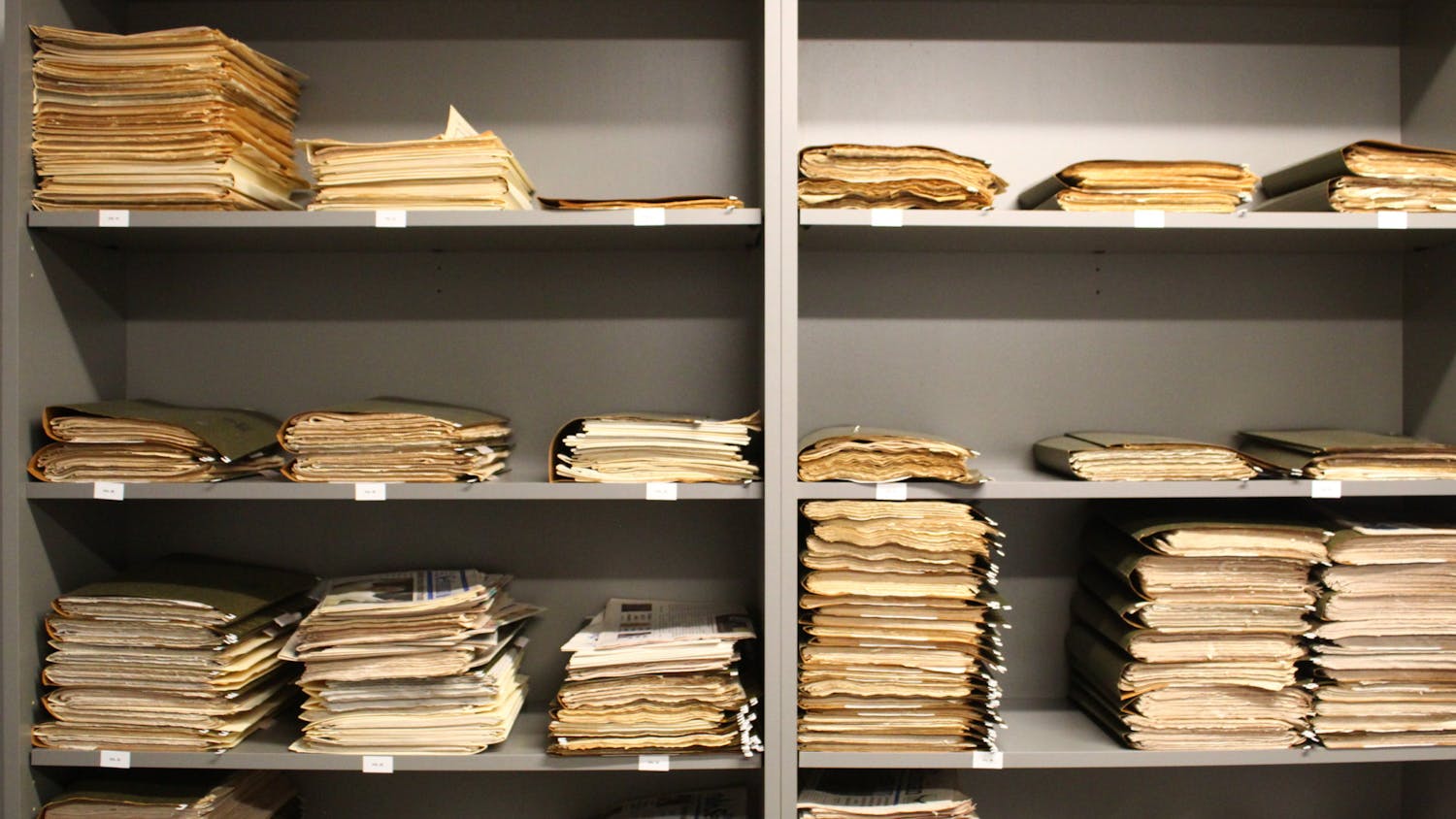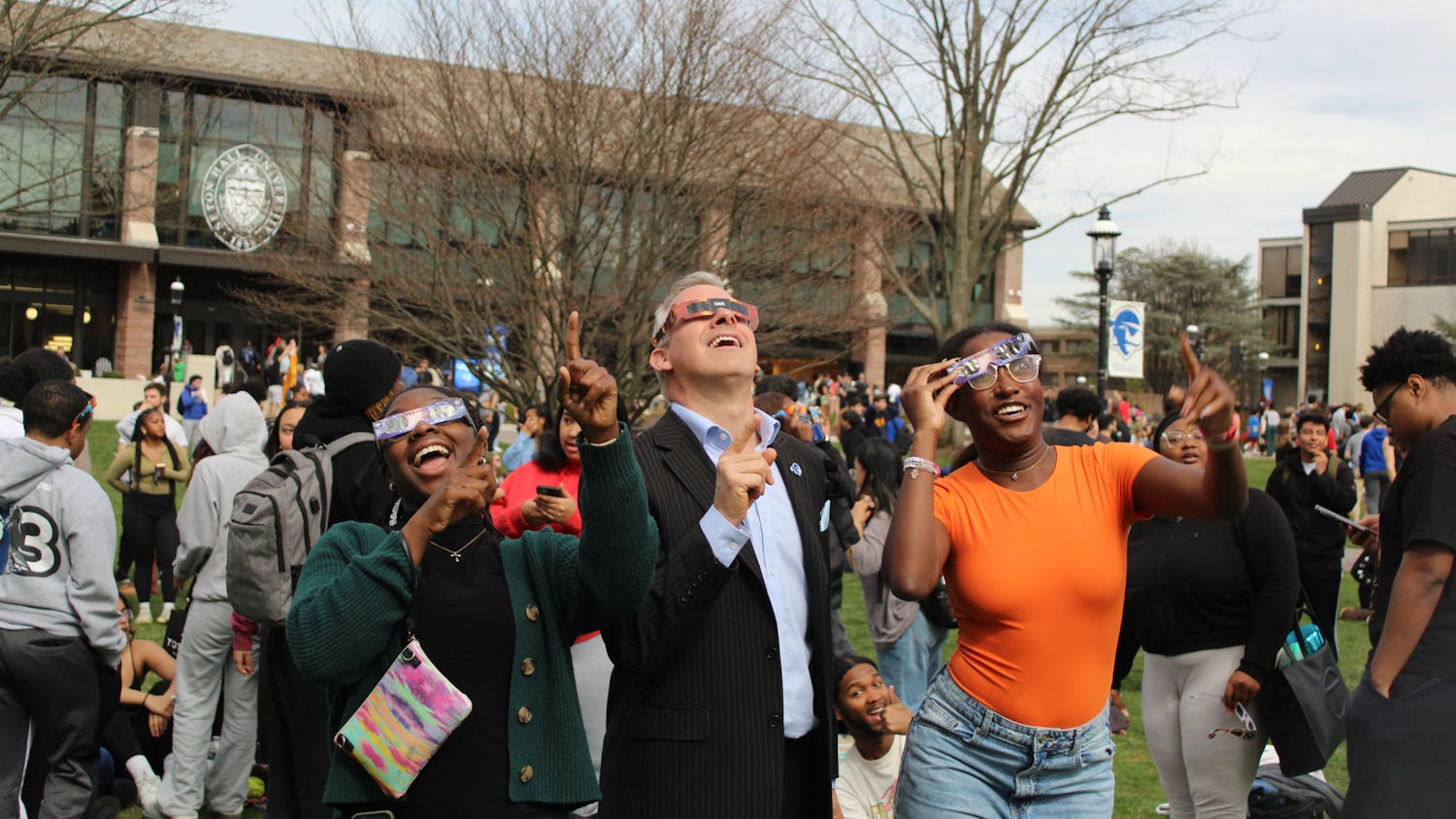[caption id="attachment_10947" align="alignnone" width="300"] Courtesy of Allison Stevens[/caption]
The Jennings Petroglyph, also known as the giant rock that occupied the main lobby of Fahy Hall for several years, has been moved to a new location on the second floor of the Walsh Library.
Rhonda Quinn, assistant professor of Anthropology, said the petroglyph is one of the largest and best preserved examples of prehistoric rock art in New Jersey.
The Jennings Petroglyph was discovered in the Delaware River area by Rudyard Jennings in 1965 and was donated to Seton Hall to preserve the artifact and save it from potential damage when the proposal to build the Tocks Island dam was still being pursued.
Although the dam was never built, the petroglyph had already been given to the University to protect it from harm, which is coincidentally the reason it has been moved from Fahy Hall to its new
spot on the second floor of the Walsh Library.
“It just so happens that last year a gentlemen in a wheelchair ran against what used to be a barrier over the top of the petroglyph and broke (the barrier),” said John Buschman, Dean of University Libraries. “When we began to look into how to protect the petroglyph — of course things have changed since it was first moved in the ‘60s — it was going to take up more space.”
Furniture located in the Fahy lobby would need to be moved if the Jennings Petroglyph remained in the lobby, due to handicap accessibility and fire exit laws.
To prevent this, Chrysanthy Grieco, Interim Dean of the College of Arts and Sciences, contacted Dean Buschman to search another location for the petroglyph.
Quinn said that moving the artifact was in the best interest of the petroglyph and its preservation.
“I am extremely happy that all of the anthropological and archaeological collections will be properly housed and conserved in the Walsh Library,” Quinn said in an email.
“In my opinion, the Fahy Hall space was not suitable for several reasons including, Americans with Disabilities Act (ADA) requirements for accessibility through the Fahy foyer, security and conservation of the irreplaceable artifact.”
Before the Jennings stone was moved, students like Michael Bachrach, senior sociology major, said that the petroglyph served little purpose in Fahy Hall.
“I think (the petroglyph) will be better off in the library because in Fahy, it was just a giant walking hazard,” said Bachrach. “Before in Fahy, people would just walk right past it. People go to the library to study, so anthropology and other students will be able to go and see an actual artifact.”
Quinn said that she hopes to generate more SHU student and research interest on the Jennings Petroglyph.
Dean Buschman said the petroglyph is “the top of the pyramid” for a large collection of artifacts at Seton Hall that remains unavailable to staff and students. Seton Hall possesses up to 26,000 museum collection items in storage, consisting mostly of Native American artifacts.
“We are going to have a set of records, located on one website, so you know we have ‘x’ amount of artifacts or that we have 2500 arrowheads of varying types. The idea is to get the artifacts here (at Seton Hall), get a web presence, get images out there so that researchers, students and teachers here at Seton Hall and worldwide can use this collection, ” said Dean Buschman. “It’s going to be nothing but a benefit to have the premier piece of the collection right in the library.”
Ashley Turner can be reached at ashley.turner1@student.shu.edu.
Courtesy of Allison Stevens[/caption]
The Jennings Petroglyph, also known as the giant rock that occupied the main lobby of Fahy Hall for several years, has been moved to a new location on the second floor of the Walsh Library.
Rhonda Quinn, assistant professor of Anthropology, said the petroglyph is one of the largest and best preserved examples of prehistoric rock art in New Jersey.
The Jennings Petroglyph was discovered in the Delaware River area by Rudyard Jennings in 1965 and was donated to Seton Hall to preserve the artifact and save it from potential damage when the proposal to build the Tocks Island dam was still being pursued.
Although the dam was never built, the petroglyph had already been given to the University to protect it from harm, which is coincidentally the reason it has been moved from Fahy Hall to its new
spot on the second floor of the Walsh Library.
“It just so happens that last year a gentlemen in a wheelchair ran against what used to be a barrier over the top of the petroglyph and broke (the barrier),” said John Buschman, Dean of University Libraries. “When we began to look into how to protect the petroglyph — of course things have changed since it was first moved in the ‘60s — it was going to take up more space.”
Furniture located in the Fahy lobby would need to be moved if the Jennings Petroglyph remained in the lobby, due to handicap accessibility and fire exit laws.
To prevent this, Chrysanthy Grieco, Interim Dean of the College of Arts and Sciences, contacted Dean Buschman to search another location for the petroglyph.
Quinn said that moving the artifact was in the best interest of the petroglyph and its preservation.
“I am extremely happy that all of the anthropological and archaeological collections will be properly housed and conserved in the Walsh Library,” Quinn said in an email.
“In my opinion, the Fahy Hall space was not suitable for several reasons including, Americans with Disabilities Act (ADA) requirements for accessibility through the Fahy foyer, security and conservation of the irreplaceable artifact.”
Before the Jennings stone was moved, students like Michael Bachrach, senior sociology major, said that the petroglyph served little purpose in Fahy Hall.
“I think (the petroglyph) will be better off in the library because in Fahy, it was just a giant walking hazard,” said Bachrach. “Before in Fahy, people would just walk right past it. People go to the library to study, so anthropology and other students will be able to go and see an actual artifact.”
Quinn said that she hopes to generate more SHU student and research interest on the Jennings Petroglyph.
Dean Buschman said the petroglyph is “the top of the pyramid” for a large collection of artifacts at Seton Hall that remains unavailable to staff and students. Seton Hall possesses up to 26,000 museum collection items in storage, consisting mostly of Native American artifacts.
“We are going to have a set of records, located on one website, so you know we have ‘x’ amount of artifacts or that we have 2500 arrowheads of varying types. The idea is to get the artifacts here (at Seton Hall), get a web presence, get images out there so that researchers, students and teachers here at Seton Hall and worldwide can use this collection, ” said Dean Buschman. “It’s going to be nothing but a benefit to have the premier piece of the collection right in the library.”
Ashley Turner can be reached at ashley.turner1@student.shu.edu.

Comments




